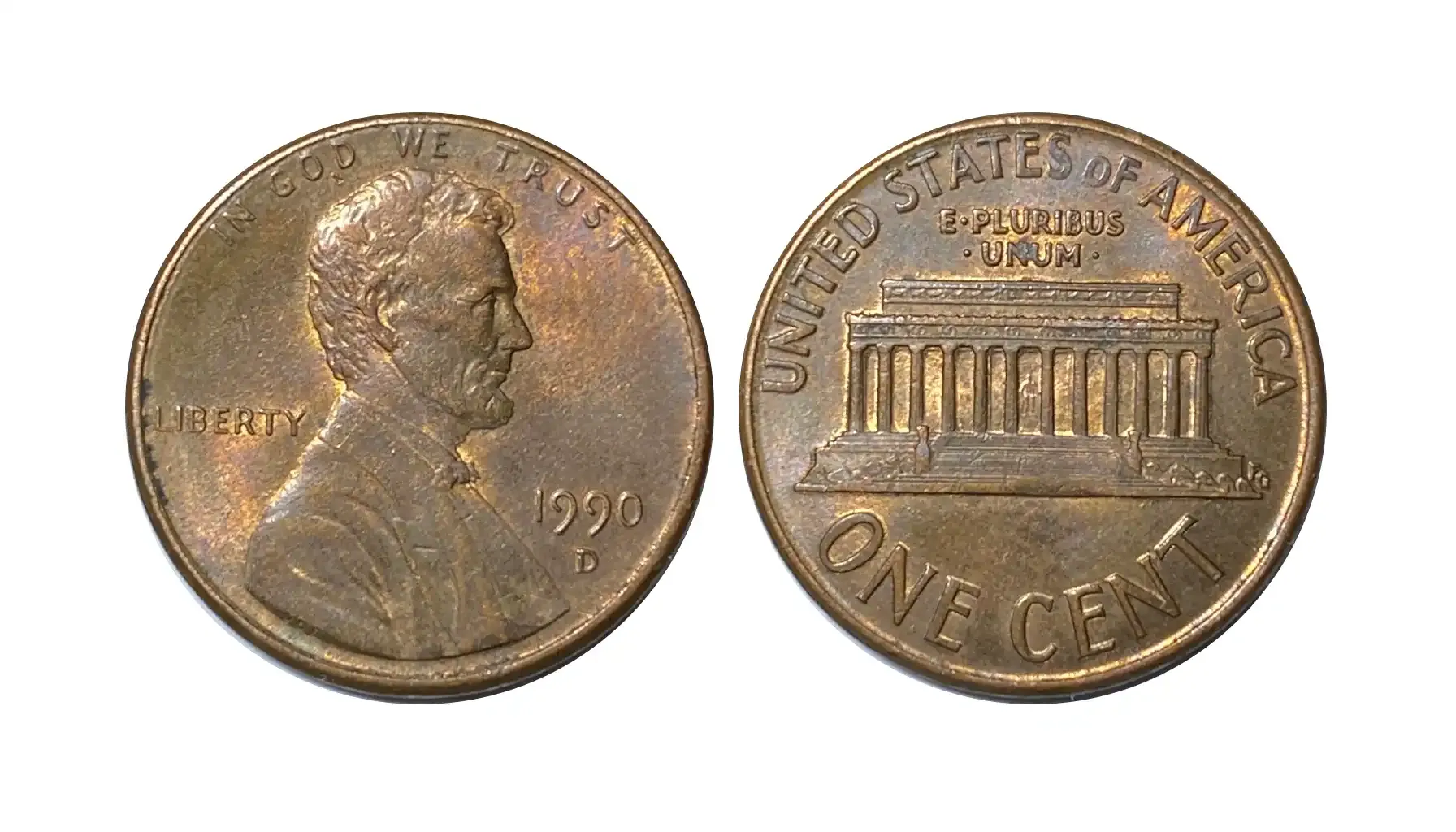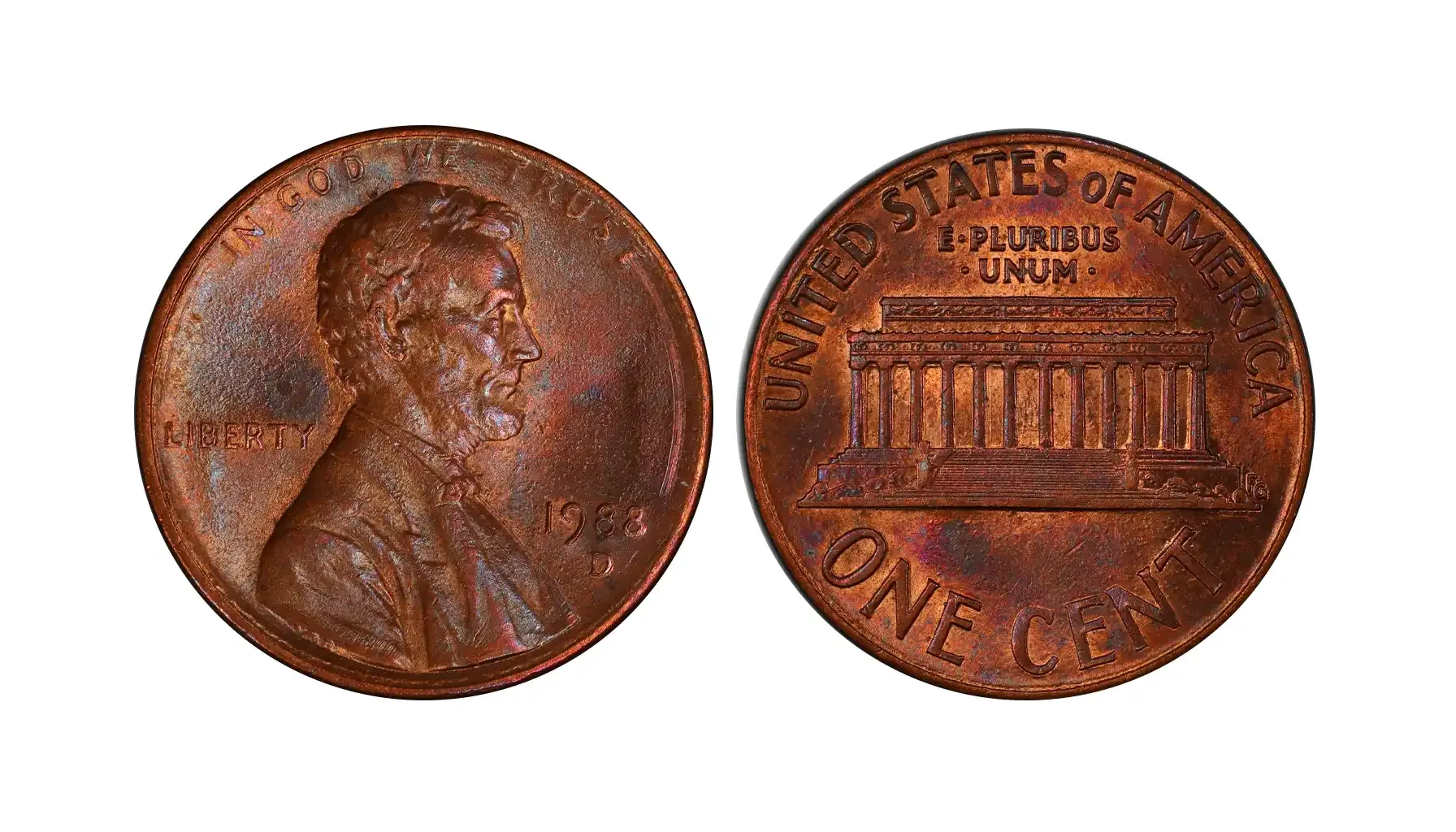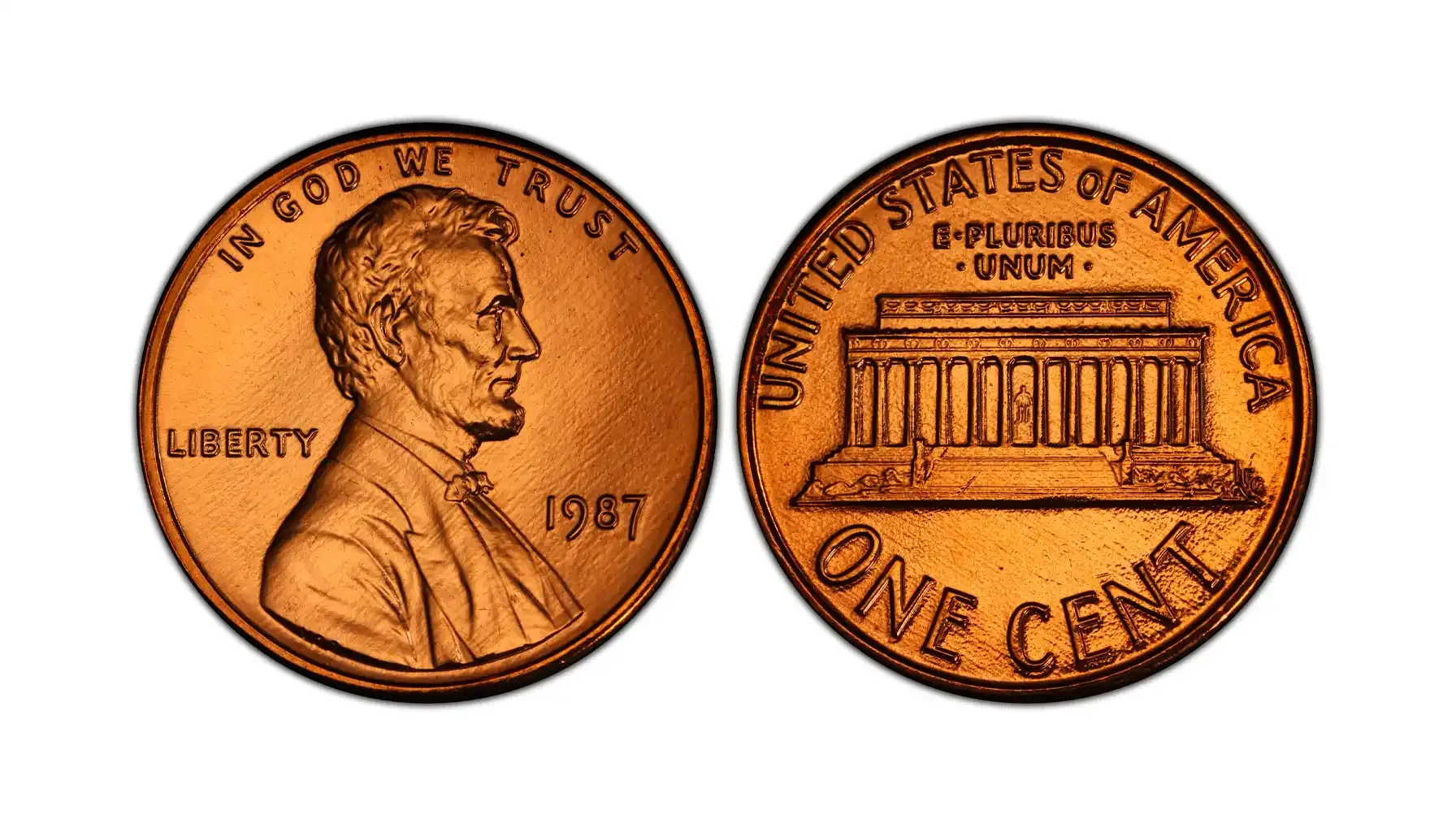Contents:
A 1980 Lincoln penny, officially known as the Lincoln Memorial cent, is a common U.S. one-cent coin that holds interest primarily for its high mintage and potential collector value in high grades or rare error types.
How much is a 1980 penny worth? Most of them are common and worth just a cent or two. However, high-grade examples, rare errors, or pristine proof coins can carry significant value.
For collectors, it’s worth examining the condition, mint mark, and any anomalies closely. Or you can simply use a coin identifier to understand what the true 1980 no mint mark penny value is!
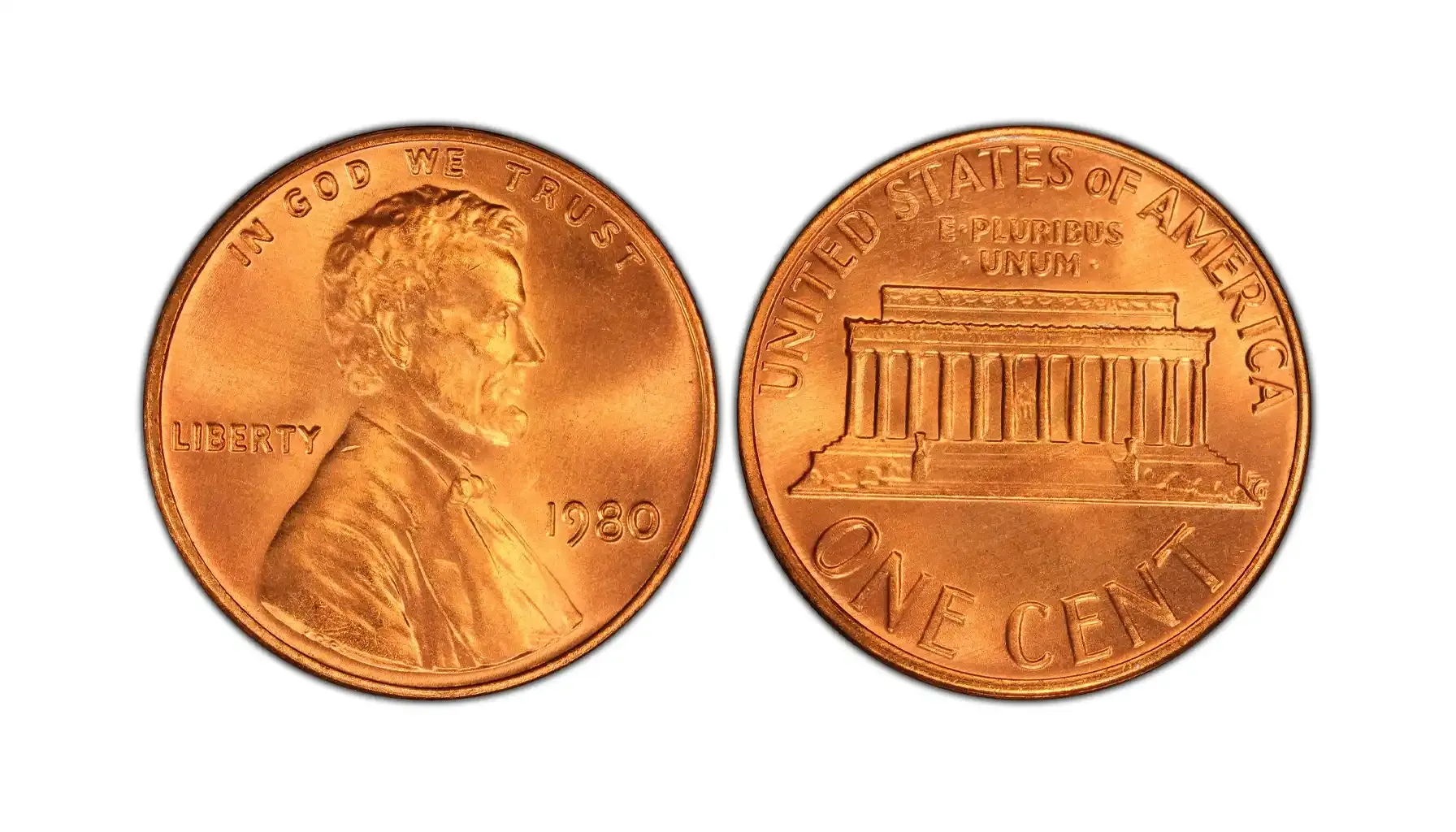
Specification | Details |
Denomination | 1 Cent |
Official Name | Lincoln Memorial Cent |
Obverse Design | Abraham Lincoln |
Reverse Design | Lincoln Memorial |
Designer (Obv.) | Victor David Brenner (initials: VDB) |
Designer (Rev.) | Frank Gasparro |
Year of Issue | 1980 |
Mint Marks | None (Philadelphia), D (Denver), S (San Francisco Proof) |
Composition | 95% Copper, 5% Tin and Zinc (Bronze) |
Diameter | 19.05 mm |
Thickness | 1.52 mm |
1980 Penny Weight | 3.11 grams |
Edge Type | Plain |
Mintage (Philadelphia) | 7,414,705,000 |
Mintage (Denver) | 5,140,098,660 |
Mintage (San Francisco) | 3,554,806 (Proof only) |
Typical 1980 One Cent Coin Value (Circulated) | 1¢ – 3¢ |
High-Grade Value | MS67 RD: ~$100–$200+; MS68 RD: rare, higher auction value |
Historical Background
The 1980 Lincoln Memorial penny is connected with the end of the U.S. Mint’s use of a bronze composition (95% copper) that had defined the penny for decades. It’s NOT a 1980 silver penny!
The Lincoln cent was first issued in 1909 to commemorate Abraham Lincoln's 100th birthday, replacing the Indian Head cent.
Designed by Victor David Brenner, it was the first circulating U.S. coin to feature a real person, and not a symbol of liberty.
In 1959, the reverse was changed from wheat ears to the Lincoln Memorial, marking Lincoln’s 150th birthday. This design by Frank Gasparro, one of the most famous US coin designers, continued through 2008.
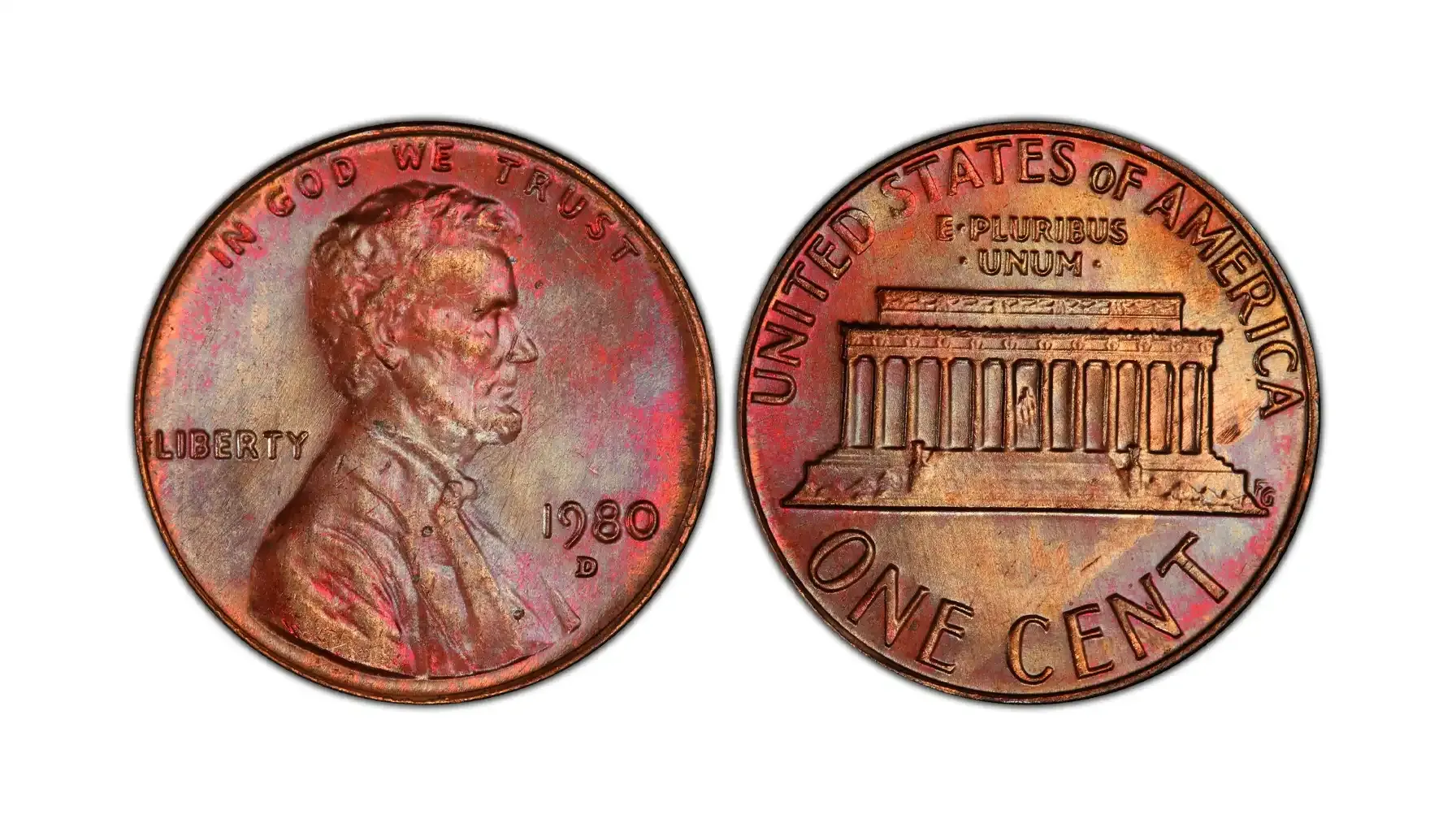
By 1980:
The penny was still made of solid bronze, but rising copper prices were squeezing U.S. Mint production costs.
Discussions about altering the metal content were underway. Just two years later, in 1982, the composition would shift to copper-plated zinc (97.5% zinc, 2.5% copper), reducing cost.
As such, the 1980 Lincoln cent is one of the last full-copper pennies, i.e. you can call it the 1980 copper penny.
The early 1980s were marked by high inflation, energy crises, and volatility in commodity prices—including copper. These economic pressures accelerated the Mint’s move away from costly alloys.
Pennies from this period were minted in the billions because of public demand for small change and the Mint’s preparation for an eventual transition in materials.
Is a 1980 Penny Worth Anything?
Mint Mark | Circulated | MS65 RD | MS67 RD | Proof (PR69–70) |
1980 penny no mint mark value | $0.01–$0.03 | $0.15–$0.50 | $100–$250+ | N/A |
1980 D penny value | $0.01–$0.03 | $0.10–$0.30 | $80–$180+ | N/A |
1980 S penny value | N/A | N/A | N/A | $2–$15 (PR69), $50–$200+ (PR70 DCAM) |
As you can see, the 1980 Lincoln cent was issued with the following mint marks:
Mint Mark | Mint Location | Details | |
No mint mark | Philadelphia | Circulation coin | Common (i.e. lower 1980 penny value no mint mark); no mint mark used on cents in Philly until 2017 |
D | Denver | Circulation coin | Also very common; “D” appears under the date |
S | San Francisco | Proof coin only | Found on mirror-finish proof coins made for collectors |
The mint mark is located below the date on the obverse (front) of the coin, to the right of Lincoln’s bust.
1980 Penny Error List with Pictures
1. Doubled Die Obverse (DDO)
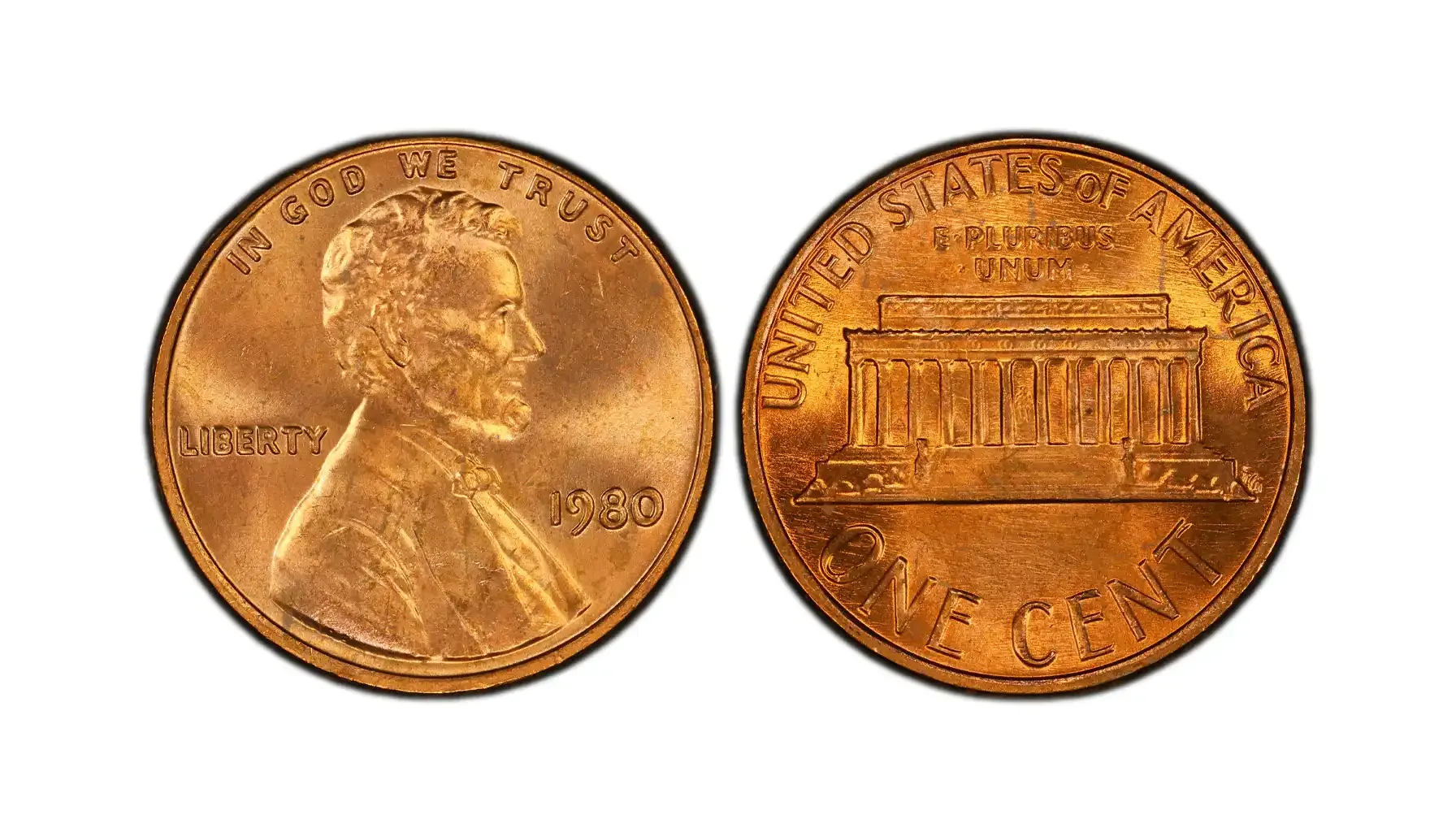
A 1980 DDO penny occurs when the die itself has a misalignment during the hubbing process. This causes design elements to appear doubled on the struck coin.
What to look for: Noticeable doubling in the date "1980", the word "LIBERTY", or "IN GOD WE TRUST". Doubling is often strongest on the left side of the coin.
How to confirm: Use a 10x loupe or microscope. The doubling should look like a shadow or separation, not a blur.
Estimated value: $50 – $500+, depending on clarity and condition.
2. Off-Center Strike
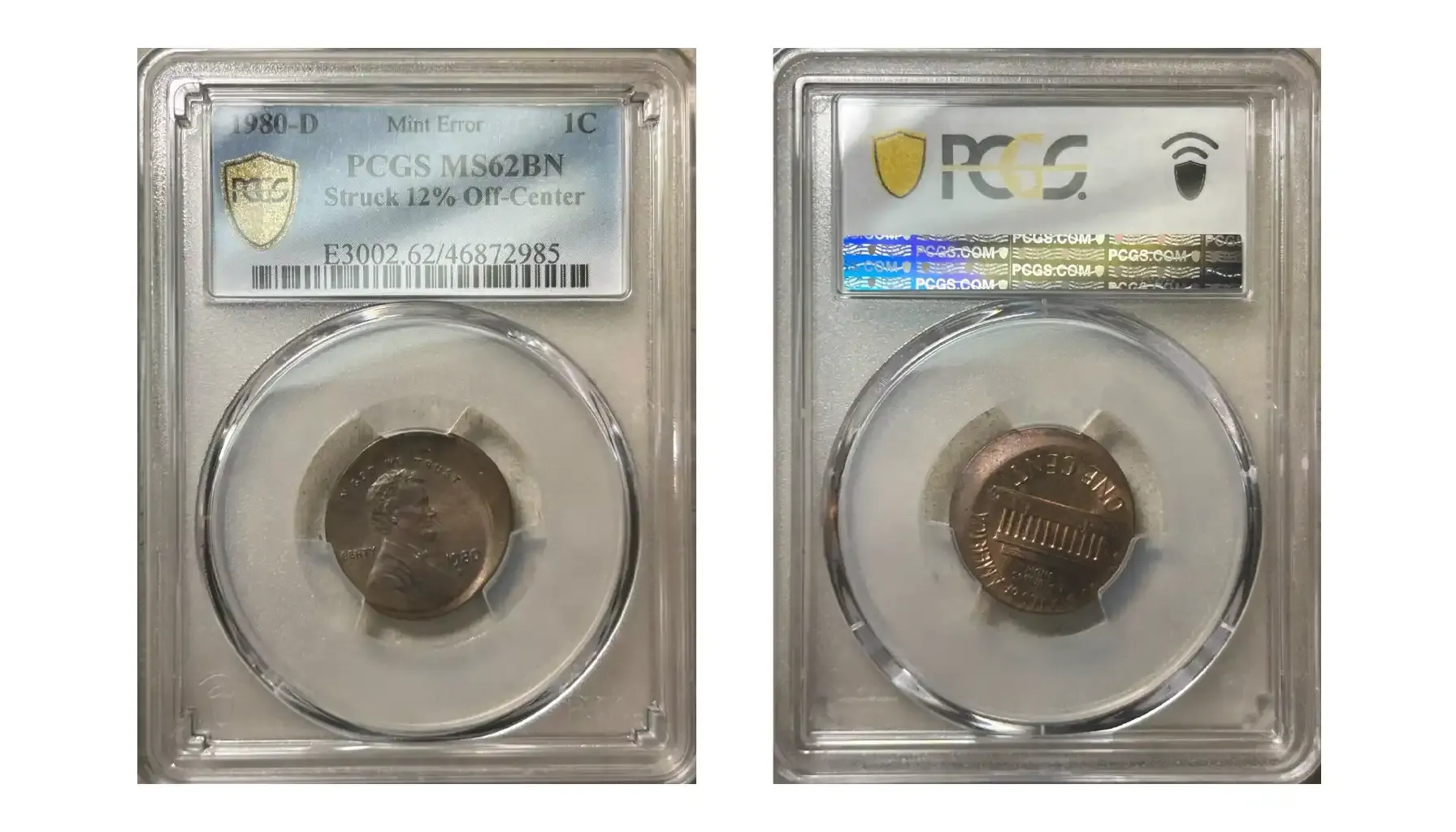
This error happens when the coin blank (planchet) is not properly centered during striking.
Part of the design is missing on one side of the coin, with a crescent-shaped blank area visible. The most desirable examples still show the full date and mint mark.
A 5–10% off-center strike is common and lower in value; 50% or more with a visible date is rare and valuable.
Estimated value: $10 – $200+, depending on off-center percentage and grade.
3. Broadstrike
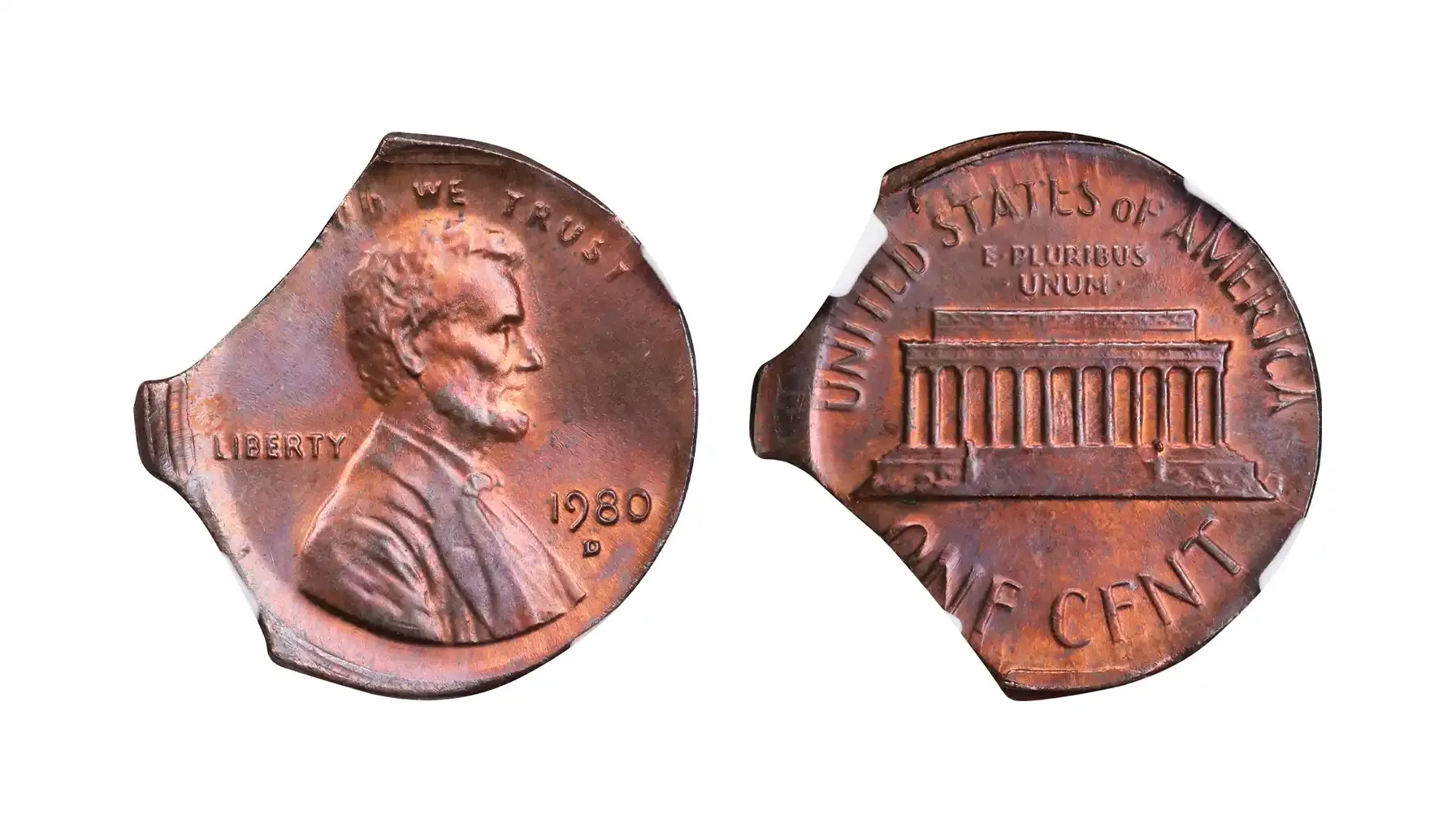
A broadstrike occurs when the retaining collar fails, allowing metal to flow outward during striking, flattening the rim.
What to look for: A wider, flatter coin with no defined rim. The design may look “smeared” but should be fully struck.
Important: A broadstrike must be centered; if it’s off-center too, it’s a different (and rarer) error.
Estimated value: $15 – $100+, especially for full red uncirculated examples.
4. Clipped Planchet
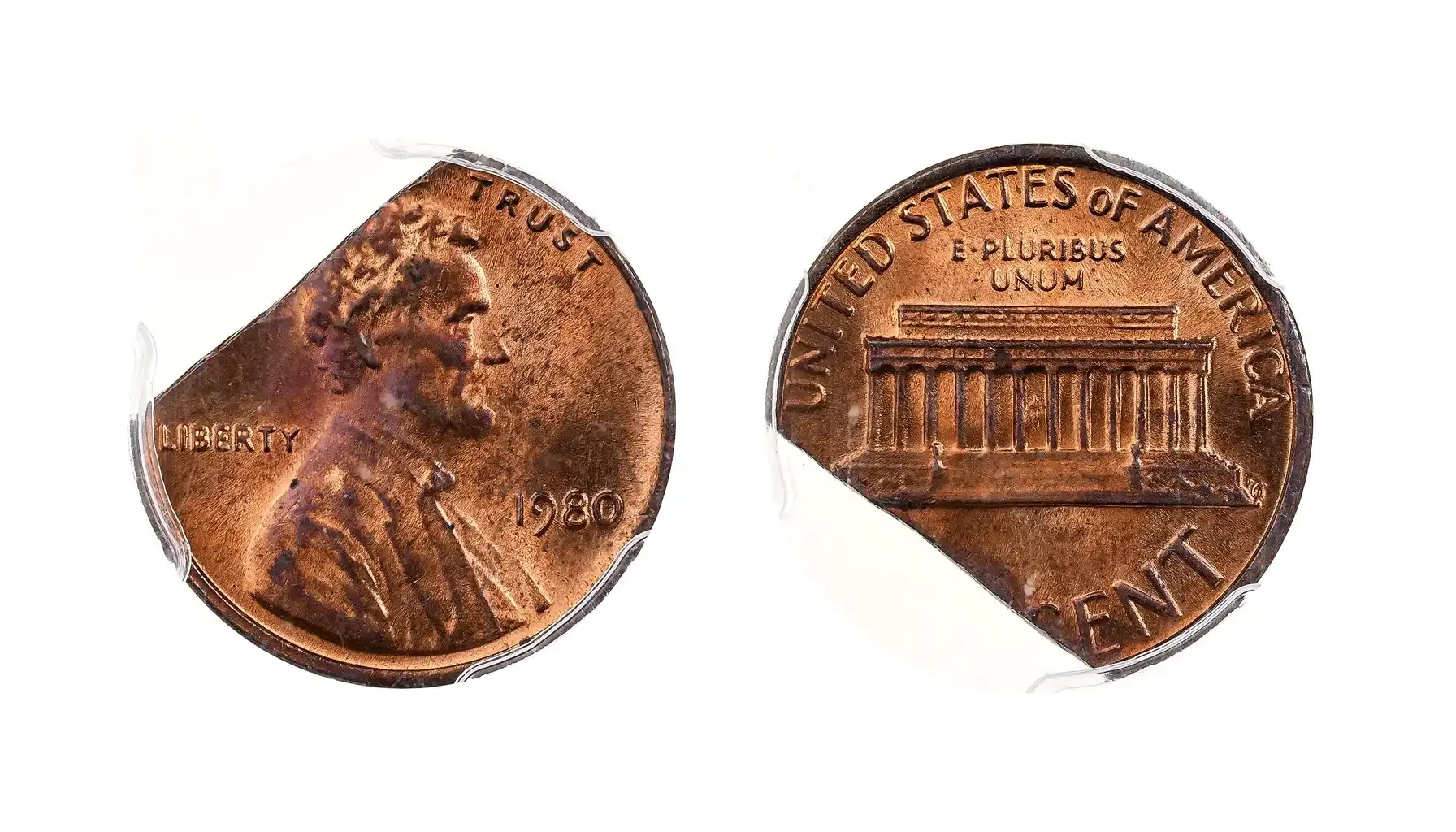
This error results from the blanking press overlapping previous cuts, producing planchets with missing portions.
What to look for: One or more curved clips or a straight clip at the edge. A true clip often affects the nearby design and the rim’s shape.
Diagnostic signs: "Blakesley Effect" — weakened rim opposite the clip — confirms authenticity.
Estimated value: $10 – $75+, depending on the clip size and location.
5. Struck on Wrong Planchet
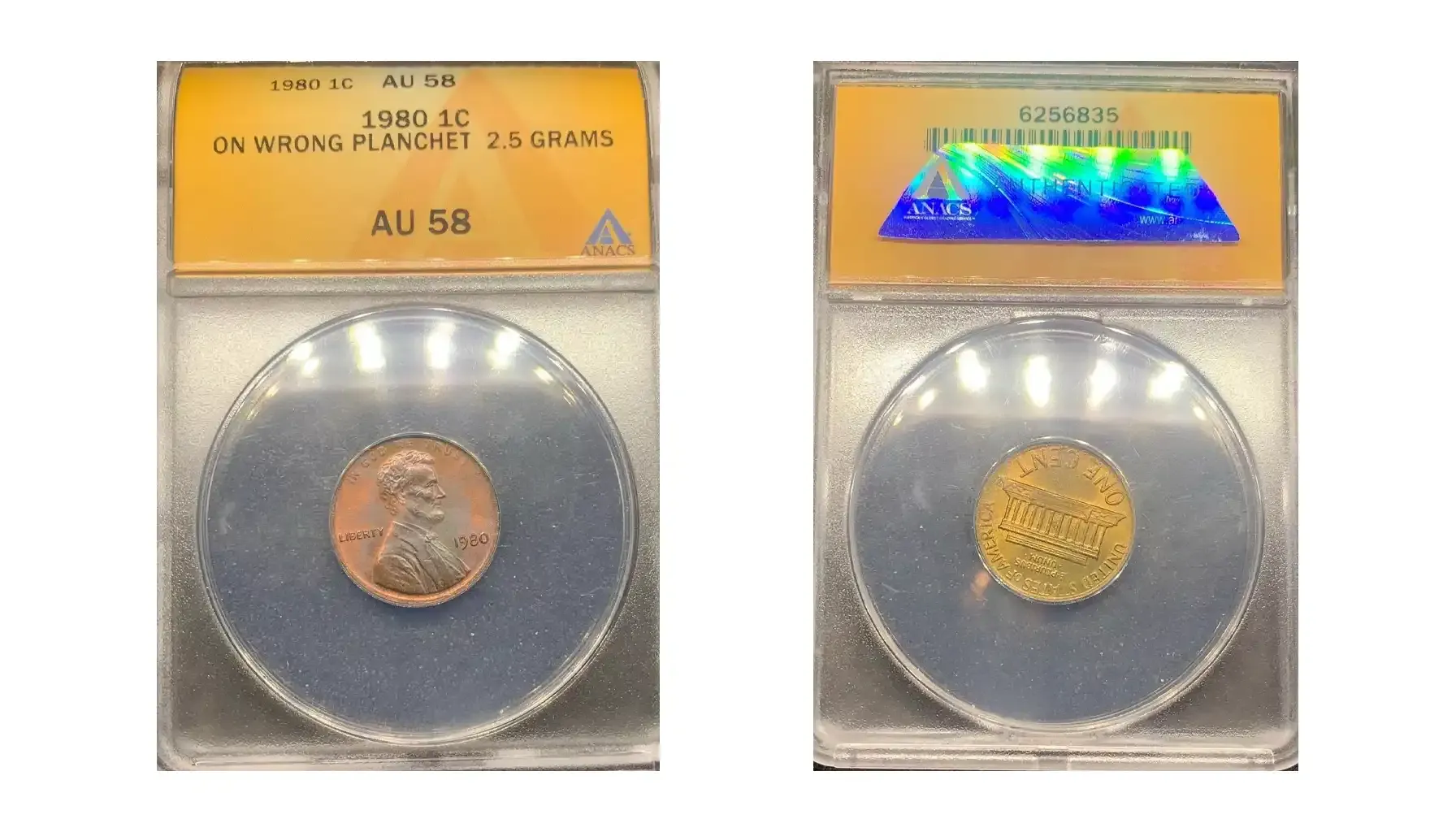
Occasionally, a penny is struck on a blank meant for a foreign coin or another denomination.
What to look for:
Undersized or oversized coin
Strange color or weight
Partial design or missing rim details
Examples: 1980 error penny struck on a dime planchet (silver-colored, 2.27g), or on a foreign coin blank.
Estimated value: $100 – $2,500+, depending on rarity and authentication.
6. Die Cracks / Cuds
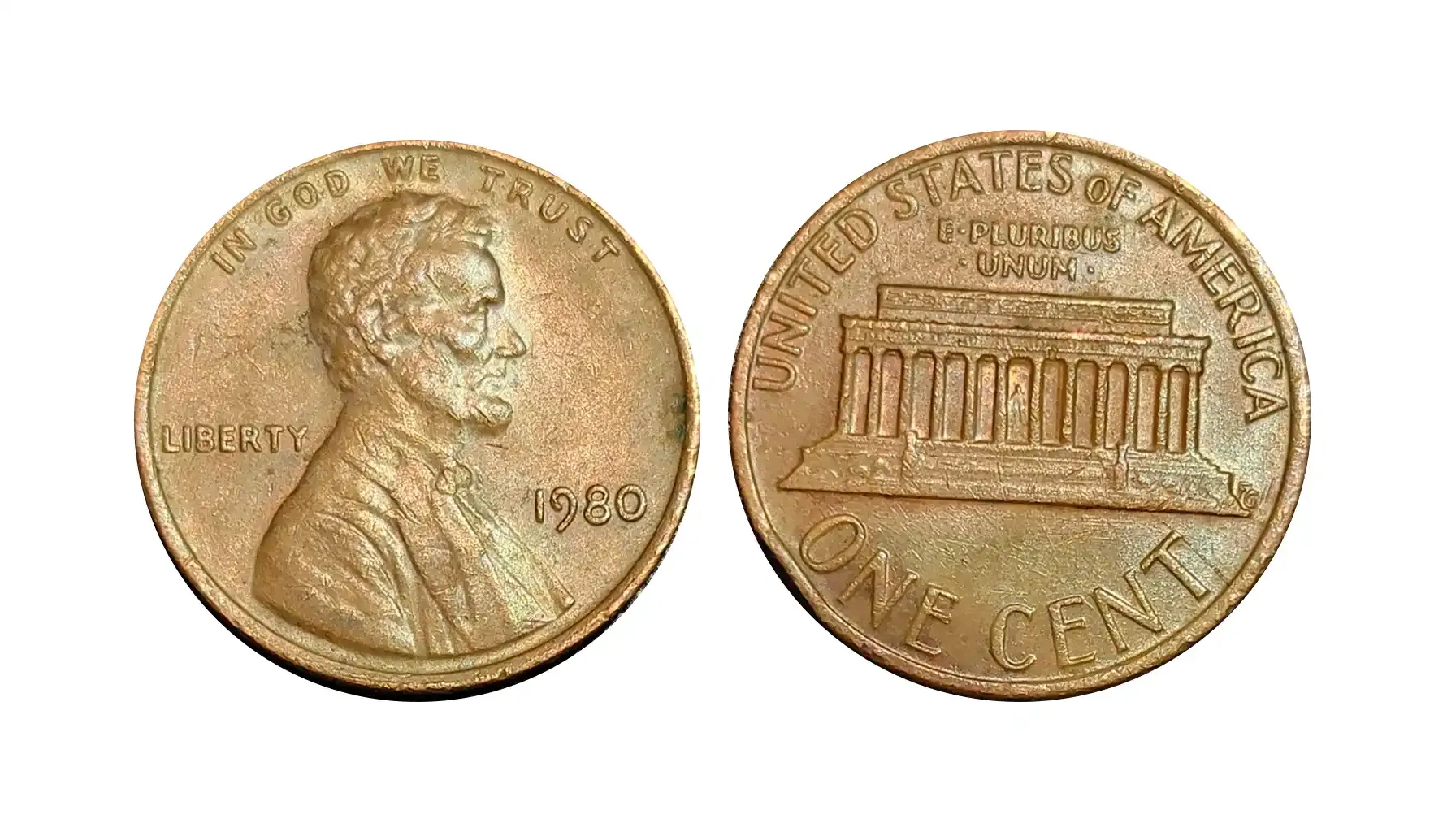
These are raised lines or blobs on the coin caused by a cracked or broken die during striking.
Die cracks: Thin, raised lines across the fields, often extending from the rim inward.
Cuds: Large blobs of metal on the rim where part of the die has broken off completely.
Estimated value: $5 – $100+, based on size and visibility.
7. Double Struck

This occurs when a coin is struck more than once by the dies, often after shifting position.
What to look for: Two sets of design elements, often overlapping or misaligned. The second strike may be rotated or off-center.
Estimated value: $75 – $500+, with dramatic examples fetching higher premiums at auction.
Investment Potential
Although the penny 1980 is a high-mintage, copper-based coin that is widely available, there are select opportunities for profit and long-term value — but only under specific conditions.
Common Circulated Coins: Low Investment Value
Reality: Most 1980 pennies are worth 1¢ to 3¢, primarily for their copper content (3.11 g of 95% copper), especially 1980 no mint penny pieces.
Scrap value: You might get around 2–3x face value in copper melt (which is currently illegal to redeem in the U.S.).
Not viable for investment unless you're stockpiling large quantities for long-term metal speculation — which carries legal and economic risks.
Uncirculated Red Coins (MS66–MS68): Moderate Potential
Red designation (RD) means full mint luster with no oxidation or discoloration. These are far less common.
MS66 RD: ~$10–$25
MS67 RD: ~$80–$250
MS68 RD: Rare; can exceed $1,000 at auction, especially with PCGS/NGC certification.
Proof Coins (San Francisco Mint): High Potential
PR69 DCAM (Deep Cameo): $15–$40
PR70 DCAM: $100–$250+ (low pop)
These are collector items, but value growth is slow. Still, top-graded proofs in perfect condition have limited populations, which may benefit from long-term appreciation.
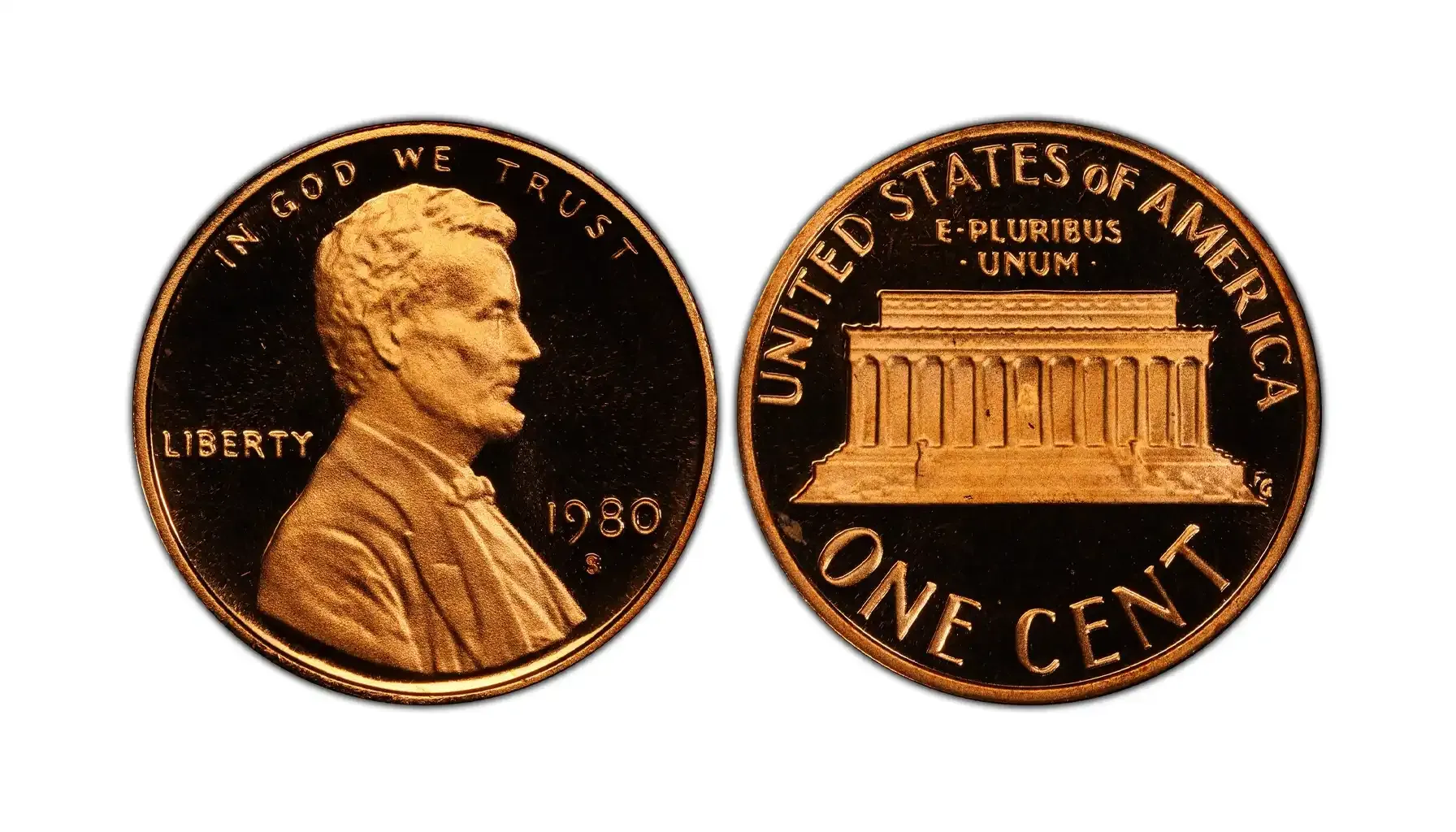
Rare 1980 Penny Error Varieties: High Investment Upside
Doubled Die Obverse (DDO), Off-center strikes, and wrong planchet errors can command $100–$2,000+.
What makes a 1980 penny rare? Value depends on authenticity, eye appeal, and certification.
The 1980 penny errors are less sensitive to bullion prices and more to collector demand — so, they are good niche investments, just like the gold coins to buy in 2025.
Numismatic Professional Tips
With over 12.5 billion coins struck across all mints, the 1980 penny is abundant in average grades. The challenge for professionals lies in identifying and certifying MS67+ red examples, which are rare due to contact marks and handling during bulk production.
Only cherry-picked uncirculated rolls, coins from sealed mint sets, or those from the 1980 to 1989 penny error list with pictures should be considered for grading submission. Target only coins with full luster, minimal abrasions, and strong strike.
Moreover, in copper coinage, Red (RD) coins command the highest premiums. Red-Brown (RB) and Brown (BN) versions trade at a significant discount. Focus on full Red coins with a uniform tone. Avoid submitting RB or BN unless they exhibit unique traits like being a specimen from a 1980 D penny error list with pictures.
True market movers are doubled dies, off-center strikes, and wrong planchet errors.
Important: For DDOs, strike doubling (machine doubling) is frequently misidentified. Professionals use die markers and magnification tools (20x+) to confirm genuine doubling.
